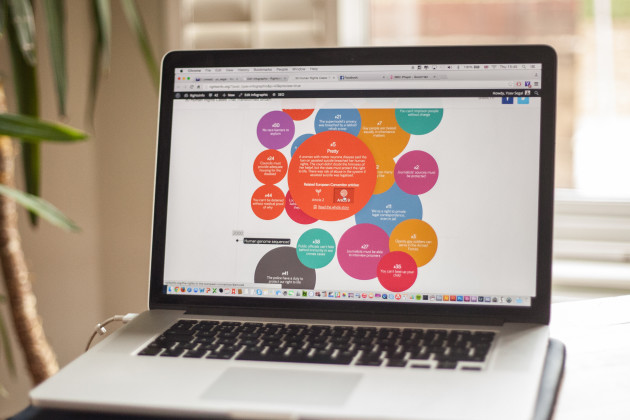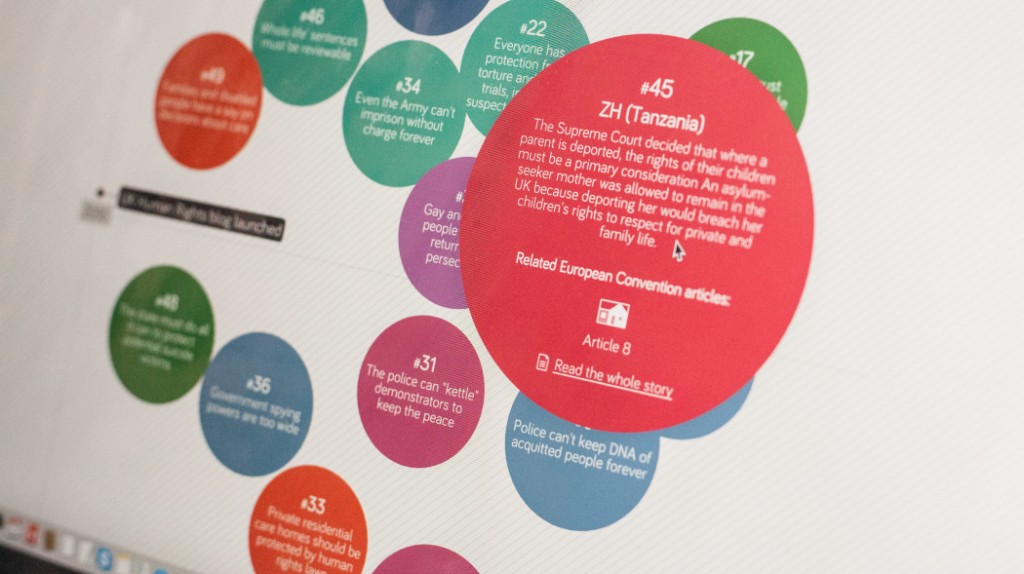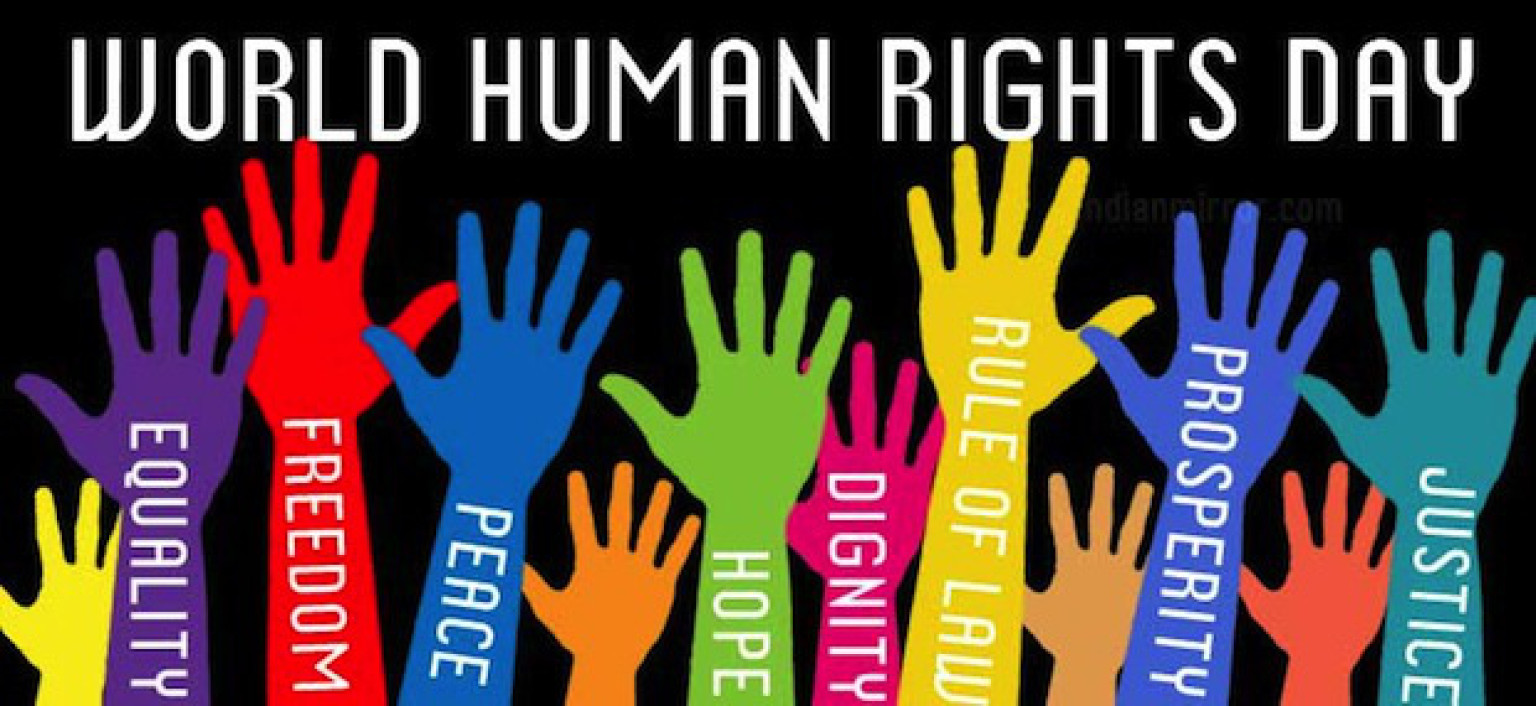This piece was originally written for The Guardian Data Blog, about what we’re doing at RightsInfo and why it matters.
Can you name a human rights case?
Was it Abu Qatada? Or prisoner votes? Or the one about the immigrant’s cat? In 50 Human Rights Cases that Transformed Britain, we are using data visualisation to introduce people to landmark human rights cases – and not just the ones you have read about in the press. You would not normally associate human rights law with data viz. I willl explain how we got there.
The story starts in 1950. The people of Europe were rebuilding their shattered cities after the horrors of the second world war. The allied nations, led by Winston Churchill, decided they wanted to set Europe on a new moral path. They created a document containing a simple list of rights which were fundamental to any democratic society: the European convention on human rights.
Britain may have written the convention but the public’s relationship with human rights has been rocky. In 2000, the Human Rights Act made them part of UK law, meaning that if our rights were being violated by a public authority, we could get a remedy in a local court.

You might have thought that the ability to claim your right to life, not to be tortured, to family life, among others would be popular. But parts of the media took against human rights from the start. So, since 2000, there has been a relentless campaign against them. Scare stories and myths have overwhelmed the debate, and even the politicians got in on the act (remember Theresa May’s cat?).
Faced with disinformation, it is almost impossible for non-lawyers to read legal judgements for themselves to see what the real story is.
It is no wonder that polling shows that the public is largely uninterested in human rights and that a significant proportion are opposed. Human rights cases play out in the courts. This means that faced with disinformation, it is almost impossible for non-lawyers to read legal judgments for themselves to see what the real story is.

This is fundamentally a problem of data communication. How do you bring to life a huge treasury of human rights information which is written, effectively, in a foreign language?
That is the question we are answering at RightsInfo, a new project which aims to revolutionise the way human rights are presented and communicated. We have worked closely with data viz megastars Information is Beautiful Studio to find original ways to talk about complicated concepts using attractive graphics and plain English.
You can read about each one in a single sentence, a slightly longer bitesize summary, or a short story, all in plain English
RightsInfo is aimed at the person who does not know much about human rights. We start from the beginning: where do human rights come from? To make that journey fun, we created a beautiful timeline of 800 years of human rights from Magna Carta to equal marriage.
But we figured it was not enough to explain where human rights came from, people want to know what’s in it for them (and not just the criminals and terrorists in the tabloids). So we turned more than 300 key human rights cases into bite-sized, colourful cards, which can be shuffled and explored, including links to original sources and explanatory materials.

Human rights myths are also a big problem, so we busted them using another interactive visualisation.
We launched the 50 Human Rights Cases that Transformed Britain visualisation last week. We crowdsourced a list of 50 cases that have had a profound effect on British society, with contributions by leading academics, lawyers and activists. We deployed principles of good journalism by applying a “pyramid” approach to each case: you can read about each one in a single sentence, a slightly longer bitesize summary (under 40 words) or a sub-300 words short story, all in plain English.
RightsInfo is about bringing human rights out of the postwar 1950s and into the 21st century.
RightsInfo is about bringing human rights out of the postwar 1950s and into the 21st century. The government has promised to radically reform human rights laws. It is crucial that people know their rights so they can fight to stop them being taken away. In the coming months, data visualisation will be a key tool for explaining what human rights are and why they matter.







